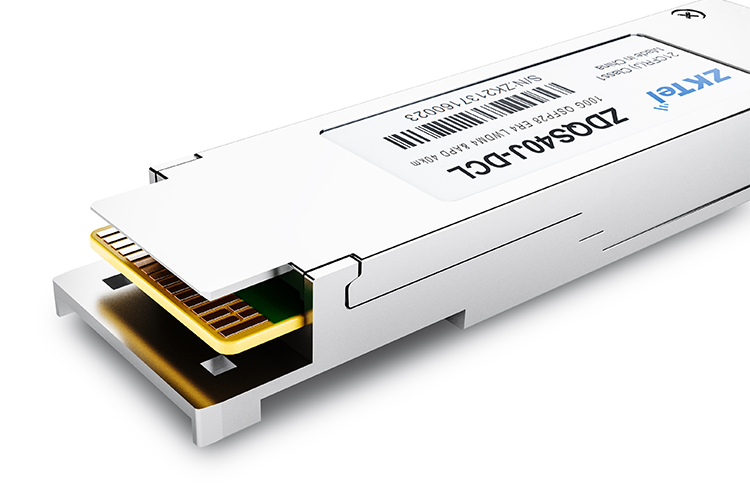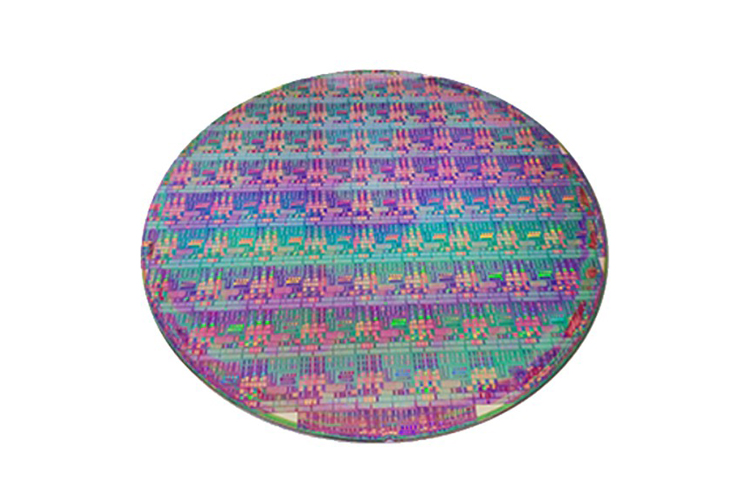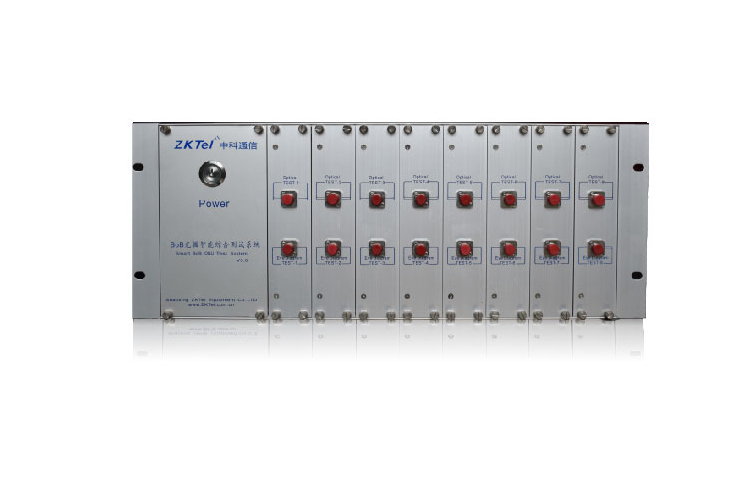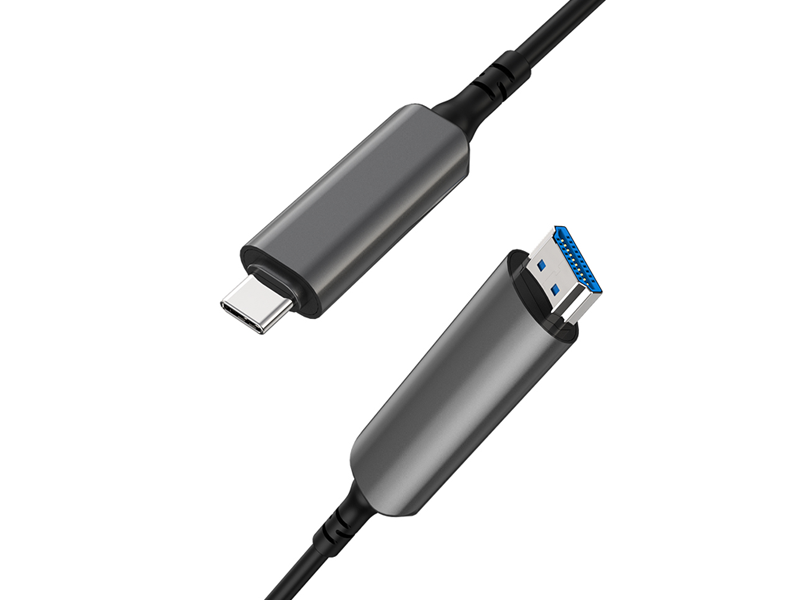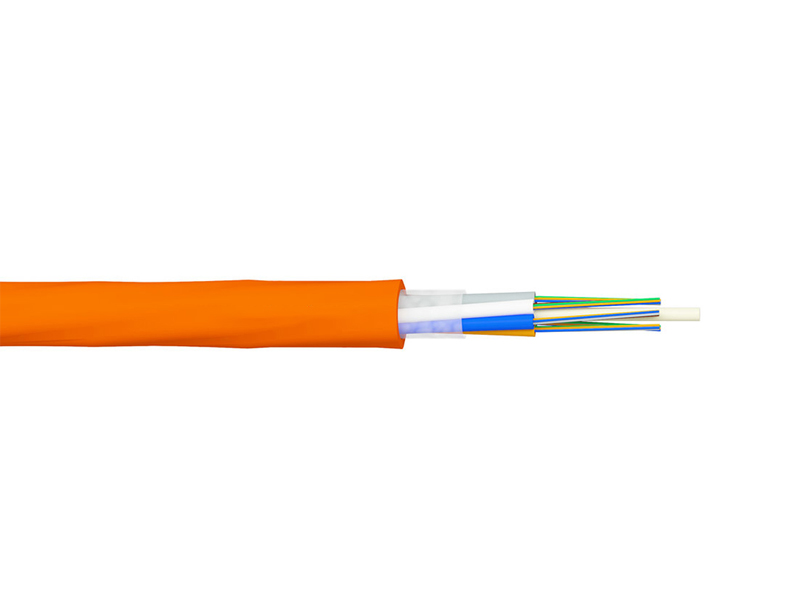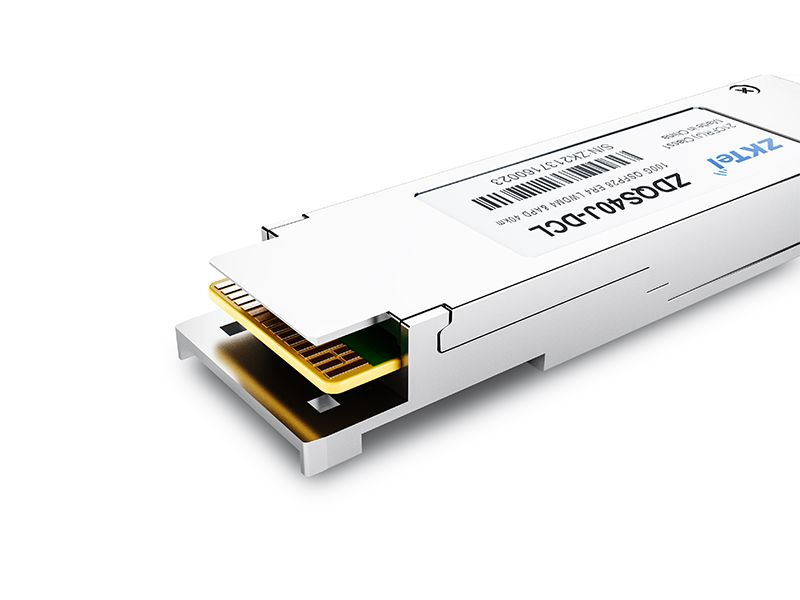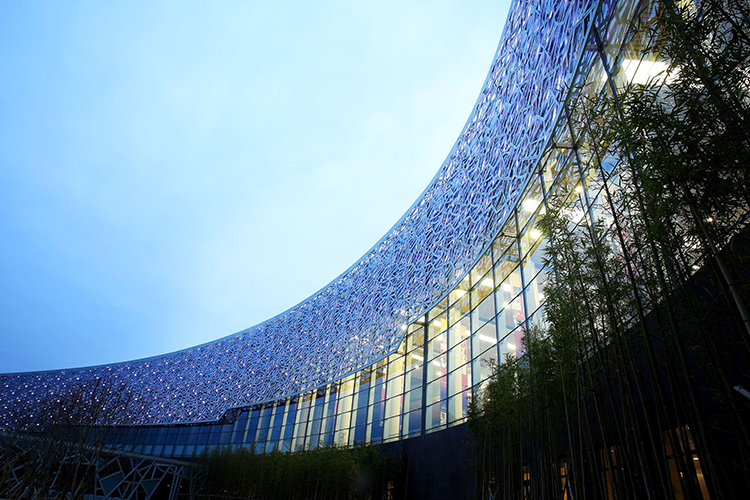Introduction
With the rapid development of new services such as cloud computing, cloud storage, 4K, 8K, and virtual reality demand, user bandwidth is growing at nearly twice the annual rate, driving the existing PON access technology from EPON and GPON to 10G PON for continuous upgrading to adapt to higher bandwidth and technology requirements. Point-to-multipoint topology-based PON network is the mainstream broadband access technology and has begun the development from EPON and GPON to 10G PON. However, 10G PON and other high-speed PON technology access bandwidth requirements continue to rise, and the simple use of the “fading model” of ODN network planning ideas will be difficult to adapt to high-speed PON technology needs, especially the cumulative dispersion of fiber links to the existing ODN network planning and deployment of new challenges. For example, the wavelength selection of the 25G/100G-PON system mainly considers several factors such as fiber dispersion, fiber loss, compatibility with existing PON system, cost of optical components, and complexity of technical implementation. In view of the above-mentioned high-speed PON technology development, the original planning idea of deploying the ODN network based on the “dissipation model” has been adjusted to better adapt to the future service development trend.
In this paper, we analyze 10G PON and 25G PON technologies, discuss and explore the key ODN network planning technologies related to the impact of fiber link dispersion, and analyze the impact of ODN fiber link dispersion on the subsequent high-speed PON planning and deployment by using 10Gb/s and 20Gb/s PTN technologies as an example, and obtain the cumulative impact of fiber link dispersion at 25Gb/s rate. The dispersion impact is comparable to that of fiber links at 25Gb/s, providing a reference for ODN network planning in the local access layer.
High-Speed PON ODN Network Planning Key Technology
Analysis of the current situation
PON technology upgrade of access networks is fast, large scale, and high investment. High performance and low cost have been key factors in determining the evolution of PON technology for access networks. In particular, the cost of optical devices accounts for a high proportion, so it is a top priority for the upgrade of access network technology needs to be considered. The current E/GPON and 10G-PON optical device industry chain has matured, while 10G PON after 25G/40G optical devices with technology-intensive, high-cost characteristics. Considering the maturity of the industry chain and the manufacturing cost of key devices, 10G PON currently uses OOK direct modulation as the mainstream coding technology, for example, where single-wavelength 25G EPON, using NRZ technology is the main technical direction of the recent standards organization discussions. From the current 10G PON technology evolution and application, the evolutionary development path of the Next Generation Optical Passive Network (NG-PON) is mainly divided into the following two stages. The first is the upgrade of the 10G EPON system. Its cost is relatively reasonable and can be deployed in a short period of time (as shown in Figure 1). The second is that the maturity of various device technologies can keep the cost of WDM-PON within an acceptable range. 10G EPON will be replaced by WDM-PON as an alternative technology to NGPON technology (Next Generation Passive Optical Network). However, the main consideration of the ODN network bearing 10GPON is still the total attenuation of the fiber link between the PON port and ONU, and the optical path accumulation dispersion of the ODN network is not considered.
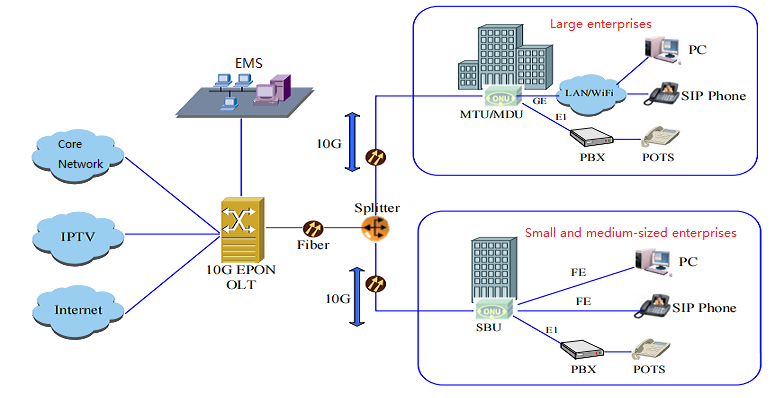
Figure 1. The schematic diagram of 10G PON network
Along with the gradual evolution of 10G PON to 25G PON, the pulse code rate of the optical signal is continuously increased and more significantly affected by the fiber dispersion of the ODN network, as shown in Figure 2.
Considering the evolution of PON technology after 10G PON, there are mainly two ways, one is single wavelength rate enhancement, baud rate from 10G to 25G/40G, etc. Another is the use of multi-wavelength superposition, each wavelength bearing rate is 10G/25Gb/s, and the use of multi-wavelength superposition to 40G/80G/100G or higher rates. According to the engineering design for the use of C-band PON technology when the dispersion limited formula calculation: the transmission distance calculation formula when the incoming fiber power is +1dBm.
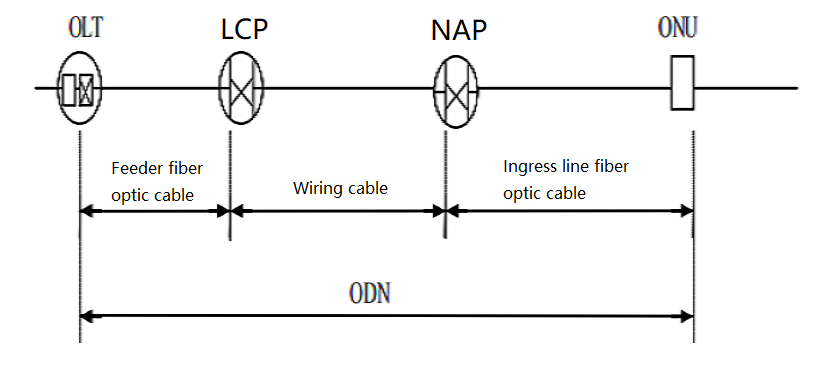
Figure 2. ODN network sketch
Where L is the fiber link length (km), D is the fiber dispersion value, and B is the optical signal code rate. The parameters of G.652 fiber, which is commonly used in access networks, are used. The impact of the fiber link of the ODN network for high-speed PON technology (transmission distances at 10Gb/s and 25Gb/s rates for different wavelengths in the C-band) is obtained for the 10 Gb/s and 25 Gb/s rate cases using intensity modulation technology, as shown in Figure 3.
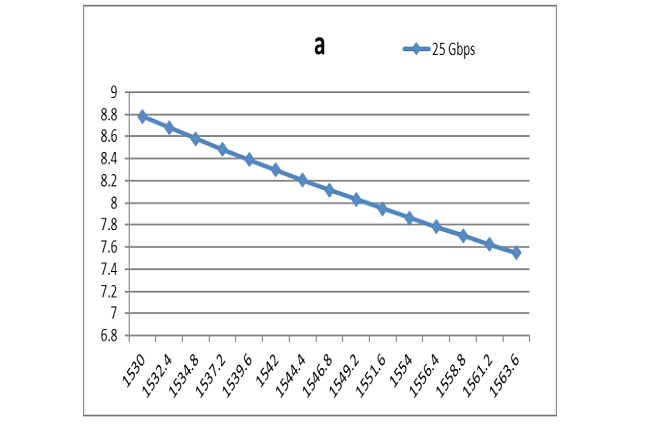
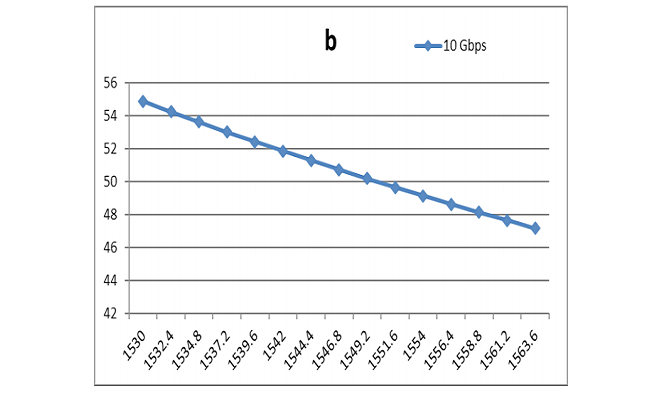
Figure 3. Impact of dispersion on the fiber link of the ODN network at 10 Gb/s and 25 Gb/s rates
Based on the results, it can be seen that dispersion at 10Gb/s and 25Gb/s rates with multi-wavelength overlay has a progressively significant impact on the fiber link of the ODN network. The maximum theoretical value allowed for 25Gb/s is about 7.5km, and the maximum theoretical value allowed for 10Gb/s is about 47km. With the increasing pulse rate of the optical signal, the cumulative dispersion of the fiber link in the ODN network has a significant impact on high-speed PON technology, especially at a 25Gb/s rate, which is close to the conservative fiber link value calculated by the current attenuation model. Therefore, it can be preliminarily concluded that driven by the demand for higher speed, especially for WDM-PON technology, the use of better optical signal modulation techniques to resist fiber link dispersion in ODN networks will be one of the key research technologies to follow.
Summary
By analyzing the WDM-PON transmission distance using fiber CD, the effect of fiber CD on the fiber link length in WDM-PON construction under multi-wavelength stacking conditions with different access rates is obtained. It is also clear from the analysis that fiber CD should be considered as the main limiting factor for PON without dispersion-compensated fiber at access rates greater than 10Gb/s, and the effect of fiber residual dispersion is fully considered to meet the requirements of different wavelengths in WDM-PON. Therefore, when planning for high-speed WDM-PON, the existing ODN network should be fully evaluated in advance, such as using the content of the service area and then continuing to draw a small micro-grid area, overlay OLT deployment room or sink box OLT equipment to the access point, and for the new ODN network should be fully considered the impact of fiber link dispersion on the subsequent high-speed PON.

